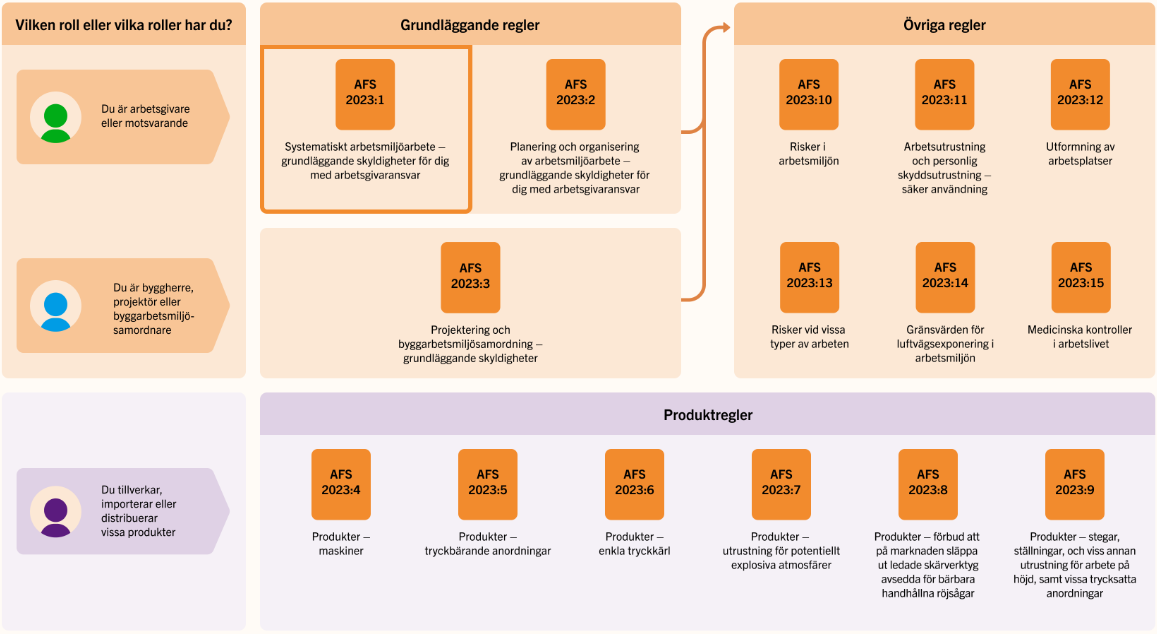- Total 0,00 SEK
Which laws apply when working where there is a risk of falling from height?
All occupational health and safety work is governed by the Work Environment Act (1977:1160) and the regulations issued by the Swedish Work Environment Authority (AFS).
Work Environment Act (AML)
Non-official English translation (Government Offices of Sweden)
Selected provisions are outlined below:
Chapter 1 – Purpose and Scope
Section 1 – The purpose of this Act is to prevent occupational illness and accidents, and to ensure a good work environment.
Chapter 2 – State of the Work Environment
Section 1 – The work environment must be satisfactory, taking into account the nature of the work and social and technological developments in society.
Chapter 3 – General Obligations
Section 2 – The employer shall:
• take all necessary measures to prevent the employee from being exposed to ill-health or accidents;
• consider the particular risks of lone work;
• systematically plan, lead and supervise the operations in a manner that ensures compliance with the work environment requirements;
• investigate work injuries, continuously assess risks, and act on them—with non-immediate actions scheduled accordingly;
• document the work environment and relevant actions, including action plans when warranted.
Section 3 – The employer shall:
• ensure the employee is well informed about the working conditions and associated risks;
• verify that the employee has the necessary competence and understands how to avoid risks in areas with significant risk of injury or ill-health.
Section 4 – The employee shall:
• participate in promoting a safe work environment and comply with necessary measures;
• follow regulations and use protective devices, exercising caution to prevent harm.
Swedish Work Environment Authority (AFS)
Information on AFS regulations (Work Environment Authority - in English)
The Swedish Work Environment Authority (Arbetsmiljöverket, AV) issues legally binding regulations and general recommendations known as AFS, based on EU directives, the Work Environment Act, and its accompanying ordinance. These rules aim to prevent work-related illness and injury.
Illustration of the regulatory structure:

Roles
Key stakeholders in the regulatory framework include employers, developers (byggherrar), manufacturers, designers, and construction work environment coordinators. Safety representatives also play a vital role in implementing the work environment regulations.
General Rules
Cover fundamental duties for employers—or their equivalents—regardless of industry, including developers, designers, and coordinators.
Other Rules
Address specific industries and risk profiles: identify applicable regulations based on your operations.
Product Rules
Contain requirements for equipment and products used in the work environment.

